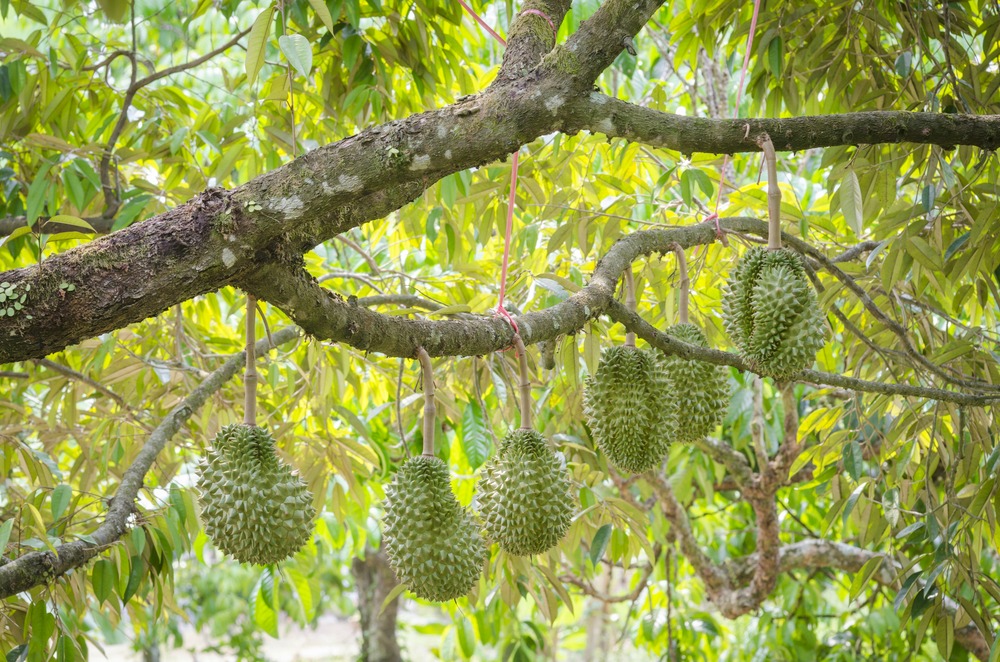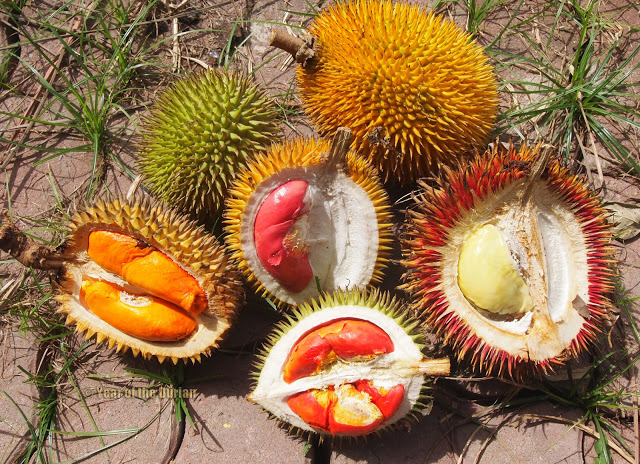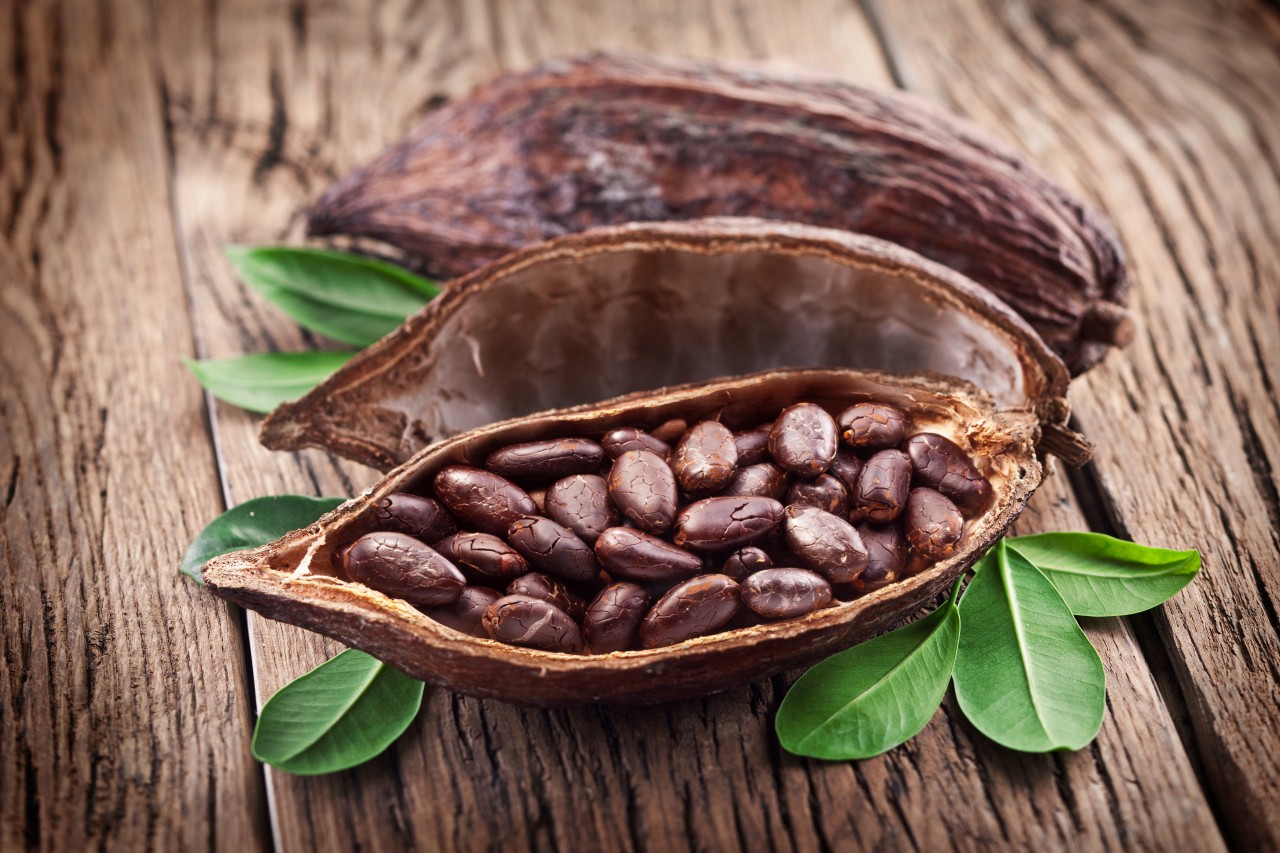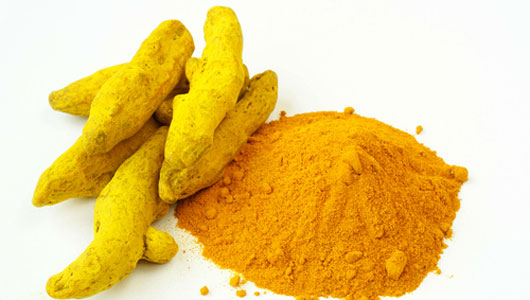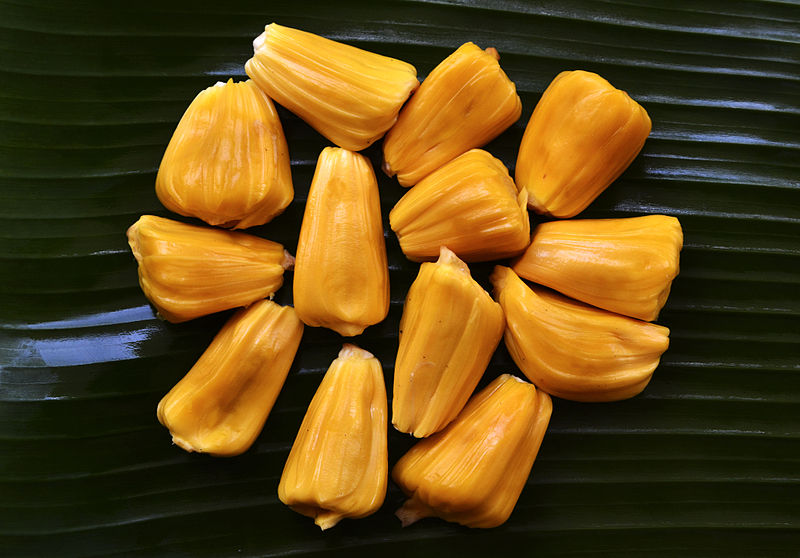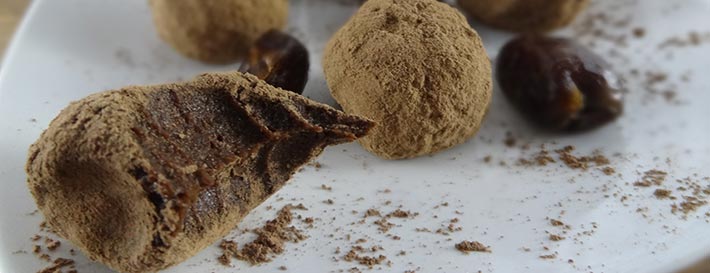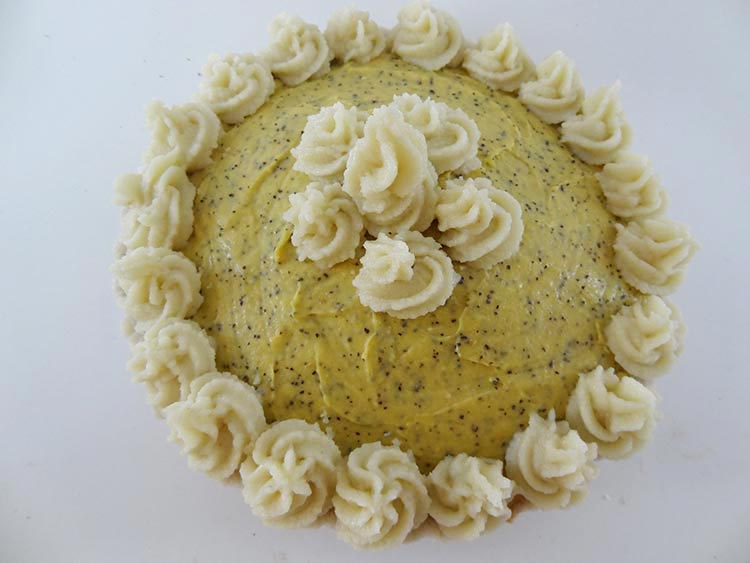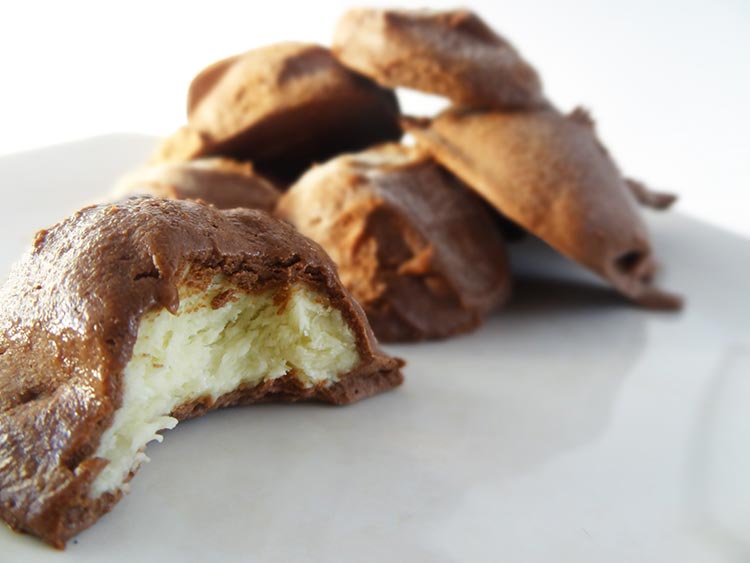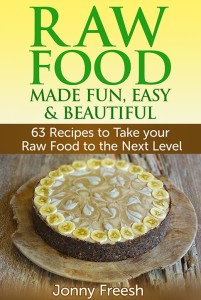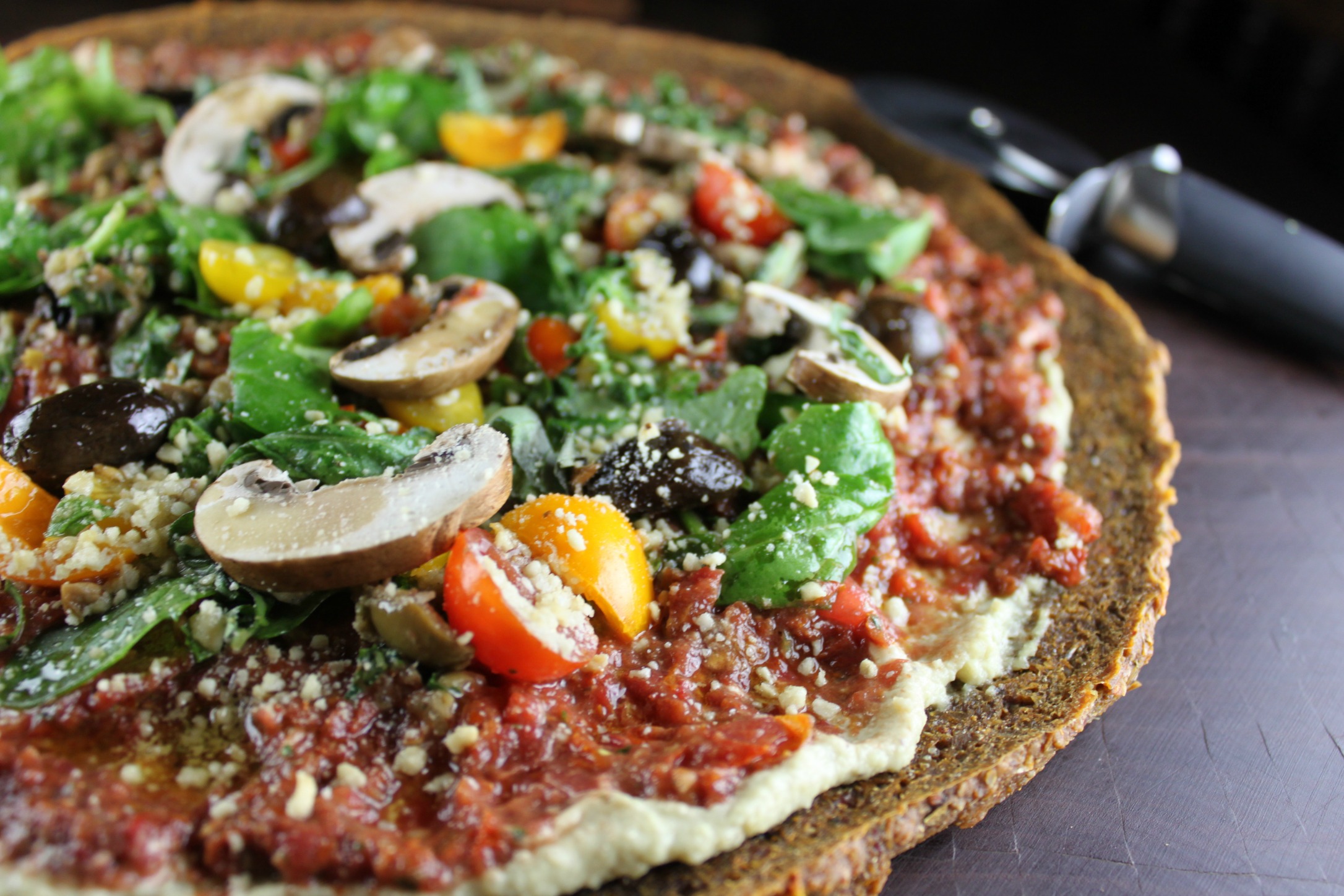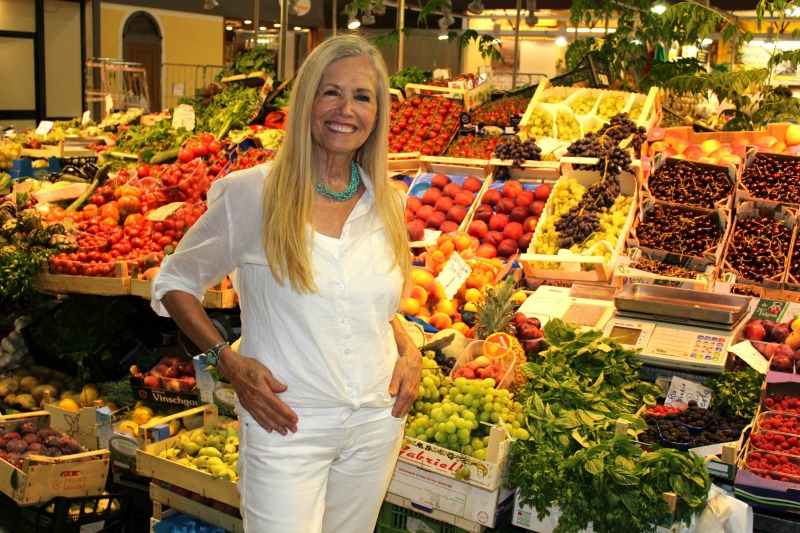
Ever tried tropical fruit that smells like revolting French cheese (Did your cat just take a dump)? Before you dread the thought of this pungent smell, you’d be surprised to know that this vitamin-C rich succulent, creamy, sweet fruit almost tastes like melted butter. Yes, I’m talking about durian, the King of Fruits.
Last time around, we talked about the top 5 tropical fruits you should eat to improve your skin health just in time for the summer (stinky durian didn’t make it to that list.)
This time I’m going to dive deeper into the tropics and exotic foods there. Today I have invited Jonny Freesh, the Owner of Raw Food Bali, Author of “Raw Food Made Fun, Easy & Beautiful” and a Rapper (yes he raps about raw chocolate, durian and vegan girls – he may want to rap about hunky buff vegan guys in his next video) to share with you:
- Why you should love durian for its versatility, fiber and high vitamin C content
- The Top 5 Asian ingredients in raw foods
- The 2 most underappreciated Asian superfoods
- How to get a hold of tropical ingredients if you’re living outside the tropics
- Jonny’s Signature Decadent Durian Chocolate Truffle Recipe
We’re also giving away 2 copies of Jonny’s new book “Raw Food Made Fun, Easy & Beautiful.” Click HERE to enter the contest with two simple steps. We will announce the winner on or before July 14th.
Let’s jump right into it.
Q: Why don’t we start with you telling us about your background and we’ll go from there?
Jonny: I’m Canadian. I spent most of my life traveling around the world. I was in an expat family so I’ve been to international schools my whole life. I like to tell people that I’m a bit of a nomad.
In terms of my background with raw food, I am a Pure Joy Certified Chef from Elaina Love’s Raw Chef Academy. She’s a well-known raw chef in America from Tucson, and she does a couple of courses in Bali every year.
Q: And why don’t you tell me about your journey to raw veganism? Why and when did you decide to raw vegan?
Jonny: I went to university in Montreal, and I had the very typical Western university student diet of beer and pizza every day. After 4.5 years in university, I was not feeling very healthy, and I wanted to feel healthy.
I have tried different diets and exercises in my later years at university but they did not work. I just wanted to quit the partying and drinking so I went traveling.
I knew that once I was gone from my group of friends in Montreal, it wouldn’t be difficult to stay healthy. I came to Southeast Asia, and I stopped drinking and partying. After about eight months of clean living and eating what I thought was healthy, I still didn’t feel good.
I felt really lethargic, slow, particularly mentally, and just not motivated to do stuff. I was really confused.
Then I met a guy who’s big into raw food and juice fasting in Indonesia, and he convinced me to do an eight-day juice fast. From that point onward, I felt amazing and never looked back. I immediately started doing about two thirds raw: breakfast and lunch raw, dinner cooked. Most of my snacks were also raw, and I slowly ramped it up.
Q: How did you decide to move to Bali then?
Jonny: After this nine-month journey through Southeast Asia, I wanted to come back to Asia. I’m sick of the Canadian cold.
When I got back to Montreal, I did the juice fast and spent a couple of months just figuring stuff out. I wanted to go back to Bali. After doing some research online, I ended up on a Bali Expat Forum and found an advertisement for RawFoodBali.com. I bought the site; it has been inactive for a few years.
I have been doing raw food for a few months at that point, and thought, “Wow, this a sign. This is what I’m going to do.” So, two days later, I was on a plane back out to Southeast Asia.
Q: And how did living in Bali influence your cooking style?
Jonny: The funny thing is that I really was not much of a cook. Before I got into raw food, I was your typical Western male who knew about four dishes just enough to impress a girl on one date and that was it.
When I got to Bali, what I wanted to do was the business and online side of things. When I originally got here, I was organizing classes and hiring other chefs in town to do them.
However, this method did not work so I started learning on my own, and then I took Elaina’s course. My style is steeped in Balinese. I love the Balinese raw food style and I use a lot of local ingredients.
Q: Now that you talked about local ingredients, what are your favorite top five Asian ingredients that you use in cooking raw foods and how do you use them?
Jonny: 1. Durian: I don’t know if you listened to my Durian song, but the music video for that just finished, so I’m really excited to launch that. Durian is super creamy so it works really well in desserts, particularly ice creams, cakes, and truffles.
Durian can be compared to gourmet stinky French cheese; you either love it or really hate it. To me, it has the most unique flavor on the planet and gives a 3D dimensional taste. It’s like a party in my mouth (no pun intended).
In my new book, I’ve got a traditional Durian truffle in which it contains durian filling and is dipped in raw dark chocolate (Read on for a free recipe from my book!)
2. Chocolate: I guess it’s not traditionally an Asian ingredient, but Indonesia is actually the third largest producer of chocolate in the world so it’s a very Indonesian thing. And chocolate, again, I mean it’s desserts, desserts, desserts. I tend not to do too much the cacao smoothies, which seem to be quite popular. I like to keep my smoothies less dessert-y.
3. Jicama: In the States, they call it the Mexican potato sometimes, and then the Indonesian name is Bengkuang, but that’s probably not that helpful. It’s a root vegetable and often compared to the taste of an apple, where it’s really juicy, white and has a light sweetness to it.
In Bali, Jicama is really cheap, and the locals don’t seem to use it much. So, I use it when I am making raw nori rolls; it’s what I use to make rice. I use shredded jicama in all sorts of raw salads and main course dishes.
And then when I make the rice, I’ll use a food processor to blitz it into rice size pieces, and it’s quite juicy so after that, I’ll put those in a nut bag and squeeze it out, and I’ll use the juice in all sorts of things.
I use it for dressings, and I use it in smoothies, and then I’ll even juice jicama when I’m doing juice fasts as well.
4. Turmeric: I put turmeric in my water all the time just to make my water healthier and more interesting. I like to put turmeric in my juices.
There’s a traditional Balinese health tonic called a Jamu, which is effectively honey, lime, and turmeric. So, I make my own style of Jamu with green juice.
I also use turmeric powder as a food coloring quite a bit for swirl cakes because it can turn white fillings yellow, which is really nice.
I don’t have to make several different fillings to get several different colors for the swirl, and it’s also really good in some dressings as well. I have a Seventeen Thousand Island Dressing recipe on my website, which is my Indonesian version of the Thousand Island Dressing, and turmeric is a key ingredient in that.
5. Kaffir Lime: It is one of my favorite herbs to put, particularly, in sauces. Yesterday, I had a course, and I taught one dish that called the Pad Thai, which is different from the traditional Thai Pad Thai dish. Kaffir lime is one of the key ingredients in that, and that’s just something that I put into all sorts of sauces and dressings.
Kaffir lime is actually traditionally known to be really good for the gums so it’s another thing that I’ll throw in my water. I just put a couple of leaves in there and just get some good dental health going on nonstop.
And if you can’t find these tropical ingredients, you can always use amazing ingredients like peaches, berries, and pears to serve as a substitute.
All these tropical fruits are high in phytonutrients, which can boost skin and overall health.
Q: This is great. Do you think that there are any particular ingredients in Asia that you think is underappreciated or not really well known in the West?
Jonny: Well, definitely, durian.
Q: It’s hard for some people to get used to that scent, though. Some people faint after smelling it.
Jonny: As I’ve said, durian is similar to stinky French cheeses. Durian can take time to appreciate, so I understand that. It’s definitely underappreciated, though.
I think that once people try it, often times, they’re are blown out of their minds!
In terms of a more accessible fruit, I’d choose jackfruit. Jackfruit is really delicious on its own and quite filling. When I travel, I often eat quite a bit of jackfruit.
Jackfruit is really good in recipes, too. I like to make jack fruit granola, and it’s really awesome in a smoothies, and then desserts as well. They use the baby jackfruit in curries and stews, and that kind of stuff and those are my favorite Asian cooked dishes. Whenever I’m travelling, I’m always looking for that stuff because I find it’s rare.
Even in Asia, they don’t really make so much of it. Jackfruit also has one of the meatiest textures of any fruit or vegetable when it’s cooked. So, if I do have any kind of meat craving, I’d satisfy it with jackfruit.
Q: You love combining durian and chocolate, which is your second favorite ingredient. Both of them have a very strong flavor so how do you combine ingredients without one ingredient overpowering the other?
Jonny: With durian, it can be a bit tricky because durian is a very variable fruit in terms of flavor. Every durian tastes different from the next one, and some durians are actually more bitter, such as the Balinese and Malaysian ones.
Since chocolate is obviously bitter as well, it can be difficult to balance durian with chocolate. For me, I really like to use the sweeter, creamier, custard-flavored durians in my recipes so then, it’s a really nice balance because chocolate for me, it needs a sweetener.
Cacao by itself is too bitter without a sweetener, and durian effectively acts as a sweetener for the bitter cacao. Durian also has a really deep oily content to it so it really helps to deepen flavors, especially for sauces and desserts.
They have a lot of fat in it because the fat really makes the flavor last longer. Durian and chocolate go together so well, especially when it’s a sweet and creamy durian. When I make truffles or the durian chocolate pie, I don’t really need to use much sweetener. The bitterness and the sweetness complement each other perfectly.
Q: How do you find creamy durian?
Jonny: I know of a favorite durian lady in Bali who lives about an hour outside of where I live. I used to just buy the durians in Ubud, but they’re very inconsistent, and I’ve often found they’re not that great.
Most of the durians grow in the mountains, and Ubud is halfway down the mountain, so I think what happens is that the villagers eat the best ones and then they bring the rest down to the city and sell it to us naive city folks.
There are are two types of durians in Bali. There’s the local Balinese type, and the Thai Mon Thong variety, which tends to be creamier and sweeter than the Balinese ones. However, those types, for whatever reason, don’t seem to make it down to Ubud and they get grown pretty high up in the mountain.
However, my Durian lady always gets them. I made friends with her and buy a lot of durian from her. She always gives me the best ones!
Q: How do people outside of tropical countries get a hold of these ingredients? It’s hard, eh?
Jonny: Yeah. I mean certain ones aren’t very available. Durian exports quite well because it’s a really hearty fruit. So, I’ve gotten durian in Toronto, and I’ve seen it in New York, so any Western metropolitan, it’s available, it’s expensive.
Certain countries are easier than others, Toronto has tons of tropical fruit now because it is probably one of the most diverse cities in the world so a lot of fruit gets exported from Asia to Toronto, not to mention Canada has got pretty friendly import laws.
I was at the super market seeing tons of tropical fruit. Certain countries aren’t so friendly For instance, America has much stricter laws, and a lot of the tropical fruits are difficult to find, but I found that the two places to get them are Asian Markets. Go to China Town, Asian supermarkets, Asian street markets. That’s where all the tropical fruits are at.
Even in New York, they had tons of tropical fruit, and then some cities have specialty tropical fruit stores, and those actually usually are in China Town, and then also the Caribbean areas of town often get Caribbean fruit in.
Q: Speaking of desserts, you create a lot of very interesting tropical, mouthwatering desserts. If you were to pick a guilt-free one to indulge in daily, which is very easy to make for any regular person, what would that be?
Jonny: My favorite that doesn’t require very much sweetener at all is probably the Durian Passion Fruit Pie.
Q: Jonny, great thanks for your time!
Jonny: You’re welcome!
Jonny’s Chocolate Durian Ice Cream Truffles
Tools
- Blender, Silicon Sheet
Ingredients
Ice Cream Truffle Filling
- 1 ½ cup Durian Flesh
- ¼ cup Irish Moss Paste (1 part Water : 2 parts Soaked Irish Moss – Blended)
- 1 tsp Vanilla Extract
- ¼ cup Coconut Oil
- ¼ cup Liquid Sweetener of Choice
- A Pinch of Salt
Durian Chocolate Coating
- ¾ cup Young Coconut Meat
- ¼ cup Durian Flesh
- ½ cup Melted Cacao Butter
- ¾ cup Cacao Powder
- ½ cup Coconut Water
- 6 tbsp Liquid Sweetener of Choice
- 1 tbsp Lecithin
- A Pinch of Salt
- ½ tsp Vanilla Extract
Process
- Blend all Truffle Ice Cream ingredients until smooth and creamy.
- Put in deep tupperware (so you can scoop nice big truffle shapes out) in freezer and let set for 6-8 hours.
- When Truffle Filling is ready blend all Chocolate Coating ingredients except melted Cacao Butter and Lecithin until smooth and creamy.
- Add Cacao Butter and Lecithin and blend until incorporated. Lecithin is unnecessary but is an emulsifier so helps oil and water mix properly.
- Pour Chocolate Coating into a deep bowl. We will be dipping our Truffles in it, so depth is key.
- Spoon out Ice Cream Truffles using a tablespoon or a small/medium ice cream scooper and drop into liquid Chocolate Coating. If your Chocolate Coating is too thick you can use the double boiler method (explained here) to thin it out.
- Use two forks to turn Truffle Filling over until completely covered in Chocolate. Pick up with forks and place on silicon sheet.
- Let set in freezer for 30 minutes to 1 hour. Eat and let Durian Madness set in.
About Jonny: Jonny Freesh is the Owner of Raw Food Bali, Author of “Raw Food Made Fun, Easy & Beautiful” and a Rapper. You can find Jonny here
Like the recipe? We’re giving away 2 copies of Jonny’s book “Raw Food Made Fun, Easy & Beautiful.”
CLICK HERE to enter the contest with two simple steps. We will announce the winner on or before July 14th.


